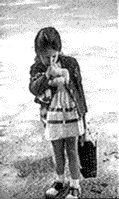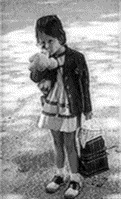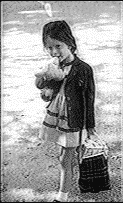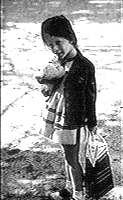This was the first in a series of notes to fifteen lectures for my class Culture and Communication. It was used between 1999 and 2004. A more recent version emphasizes "education"
How come we are doing whatever it is that we are doing here tonight?
- When John Dewey states that "social life is identical with communication
"(1966 [1916]: 4-5), he
writes the statement as a general truth.
- My task in this course is to explore this statement. What justifies
it? What are its consequences? What must be criticized?
- By equating "social life" with "communication",
and communication with "consensus," Dewey opens a wide range of problems
(a "problematics") to explore that have fascinated philosophers, social
scientists, politicians and educators. After 100 years (or 200 depending
on as
far one traces
the history of this problematics) educators for sure cannot consider
the
issue moot--on the contrary.
- I like to trace this problematics to the American pragmatists in the dominant interpretation. In American sociology, Parsons developed claiming to build more on the European traditions centering on Durkheim and Weber. All this is matter of continuing debate.
- The problematics has two aspects
- a technical aspect: what is involved in making human beings human as we know them?
- a political and educational aspect: given that all political systems, and thus of all educational systems, are man-made how are we to make institutions (curricula, pedagogy, programs) for others to use and build democracy with (can there be anti-hegemonic hegemonies?)
- Our task in this course is to address the technical problems.
- But this technical problem would not be so pressing without the second set of problems: as educators we build and shape. This requires a moral evaluation of what must be done as well as an assessment of what is doable and how.
WHAT TIME IS IT?
These problems can be illustrated by looking carefully at the following set of pictures and questioning what we see and how we see, what we report to each other, and how we do this.
|
|
| See also the animated version of these images to get a better sense of the transformations in the little girl's stance, as well as further discussion of how these images may help us clarify fundamental questions in communication theory. |
Now compare her final stance to the stance of two models as published in an advertisement of the same period.
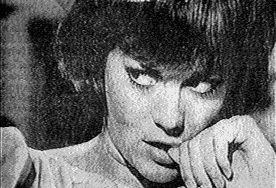
 |
| Pictures taken from Paul Byers' "Cameras Don't Take Pictures." (1966) |
The similarities in these poses are striking. (Note the bends in the body, the way the head leans and the eyes look up, the thumb on the lip). (for more, see Goffman's Gender Advertisement, N.Y., Harper and Row,1974)
What are we to make of the changes in bodily and this similarity ? What are we to make of the possible changes in what advertisers consider alluring over the past 50 years?
- Should we talk of enculturaltion and learning (thereby suggesting that a four year old is already fully aware of bodily patterns of stereotypical seduction poses?)
- Should we talk about sharing, consensus and, at least by implication, acceptance by the little girl of cultural patterns that, at the same time when this picture was taken a group of famous feminists were attacking.
- Are we entitled to say that the cultural patterns embodied by the little girl, and the grown women in the advertising pictures, are "their" culture?
- What about the photographer who hides himself behind the pictures but is in fact directly engaged by the little girl as she notices his activity. Is he responsible for getting the little girl into the pose? Is the cultural production that he triggers "his" culture too?
- What about the professor who proposes all this as a theoretical exercise?
- Might we say that the little girl is learning as she shifts her body as she begins the interaction with the photographer and slowly get into a position which the photographer invites her to take, in spite of himself perhaps, but which he then has to accept as the end of the sequence.
- Might we perhaps say that the cultural patterns are in fact external constraints embodied and performed by girl, photographer, advertising agency, and eventually all of us, as we expect a reaction to our move and must then acknowledge our interlocutors performance as somehow responsive.
These are the kind of question which are still being asked even as 50 years of research has greatly expanded our understanding and refined our debates
OUTLINE OF THE COURSE
And now, for fun, another rendering of the problem for all theories of culture or communication:
| `And only one for birthday presents, you know. There's
glory for you!' `I don't know what you mean by "glory",' Alice said. Humpty Dumpty smiled contemptuously. `Of course you don't -- till I tell you. I meant "there's a nice knock-down argument for you!"' `But "glory" doesn't mean "a nice knock-down argument",' Alice objected. `When I use a word,' Humpty Dumpty said, in rather a scornful tone, `it means just what I choose it to mean -- neither more nor less.' `The question is,' said Alice, `whether you can make words mean so many different things.' `The question is,' said Humpty Dumpty, `which is to be master -- that's all.' (Lewis Carroll, Through the Looking Glass, 18??) |
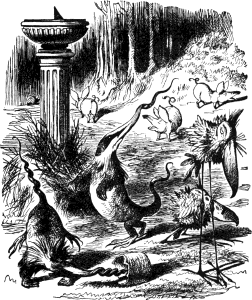 |
|
|
It is strongly suggested that the two articles "required" for today's class, be read before the mid-term exam. The reading by Dewey is particularly important. My own article is useful as a general introduction to my attitude towards several of the overall issues we will be addressing. It was written for undergraduates in introductory courses in anthropology.
